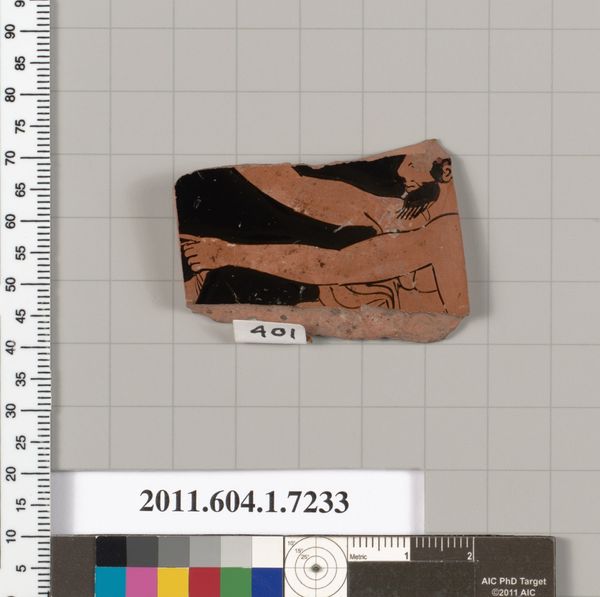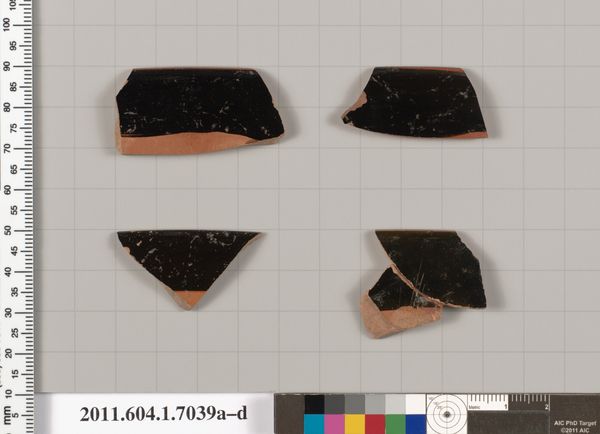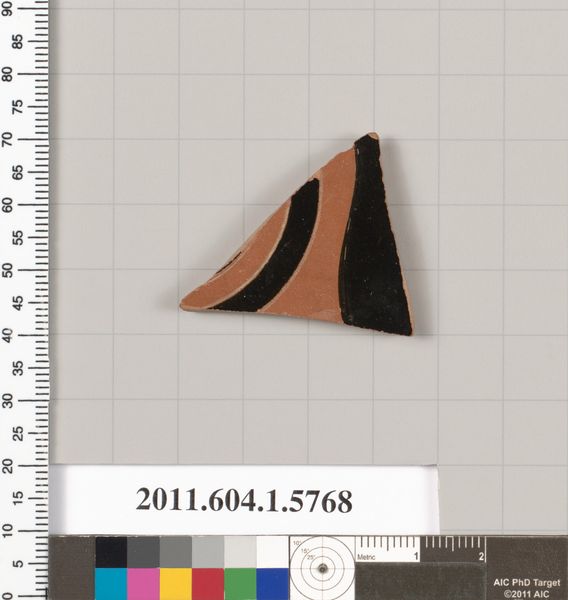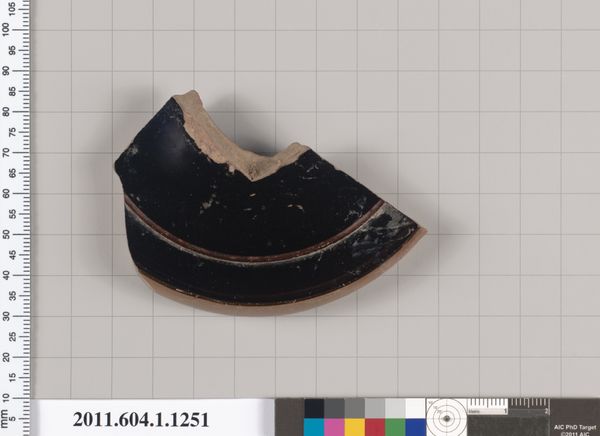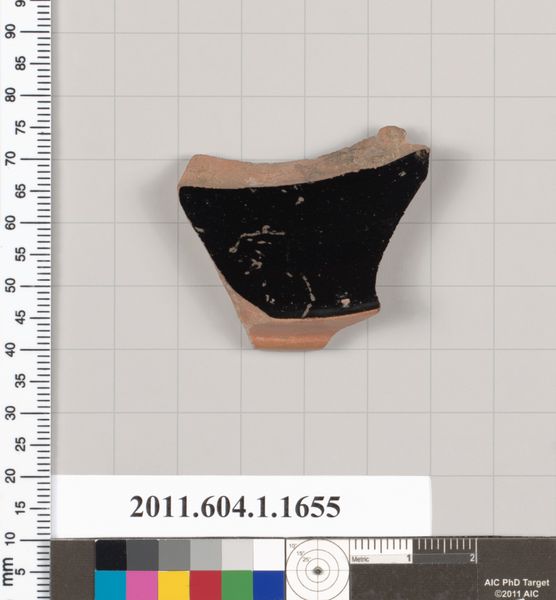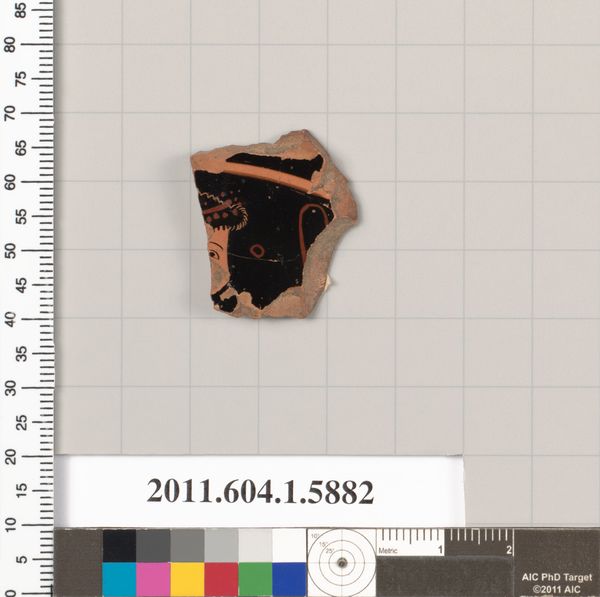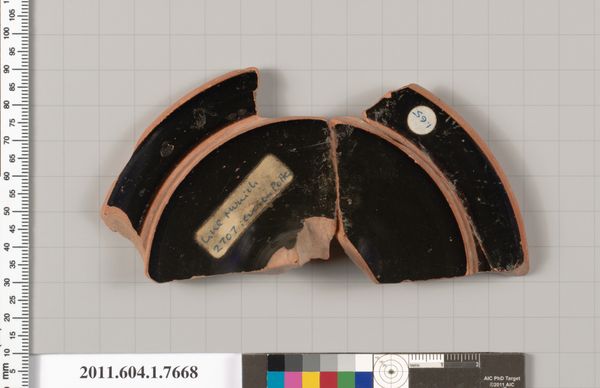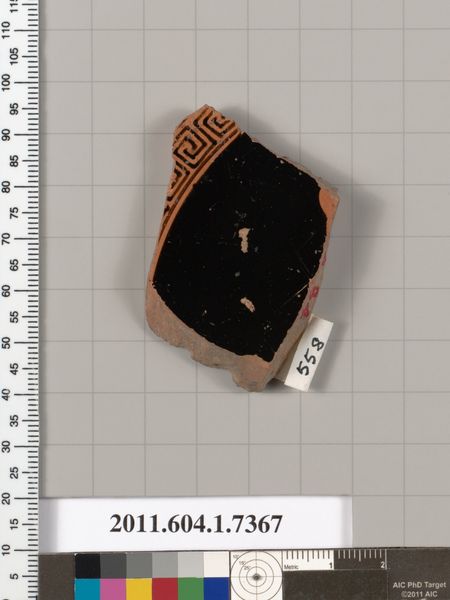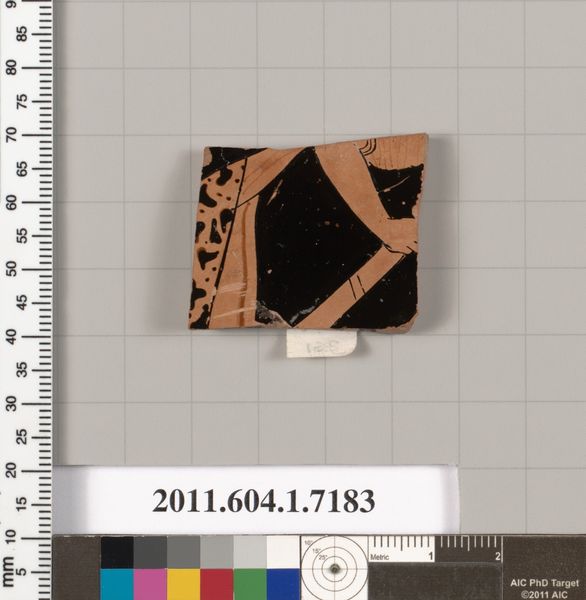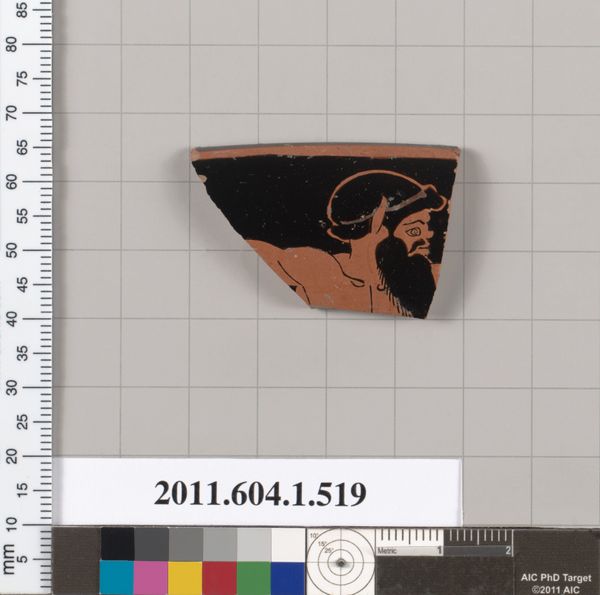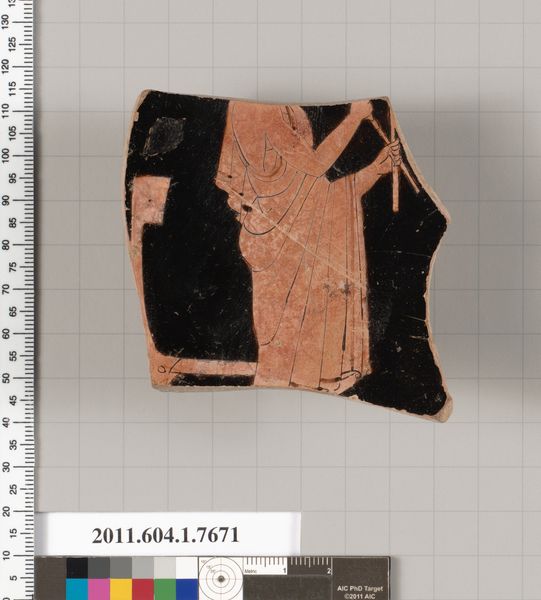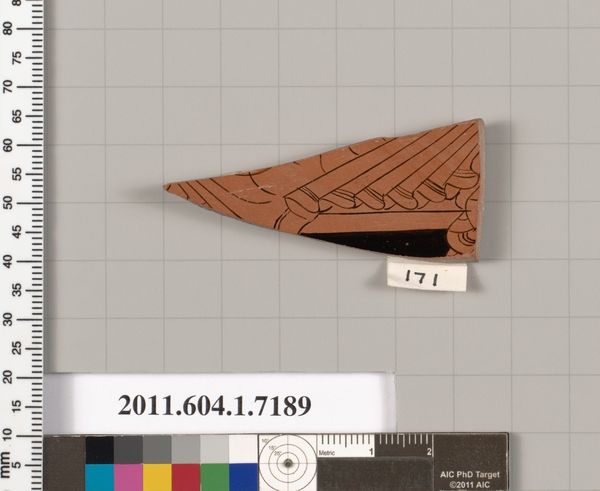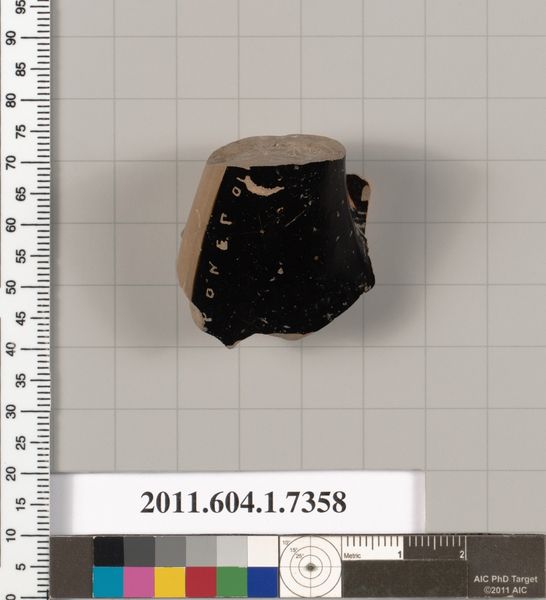
drawing, ceramic
#
drawing
#
greek-and-roman-art
#
ceramic
#
vase
#
line
Copyright: Public Domain
Curator: We're looking at a fragment of a kylix, a Greek drinking cup, dated around 530 BC. It is currently held at the Metropolitan Museum of Art. Though small, it speaks volumes about ancient Greek artistry and culture. Editor: Intriguing. Even this small piece, likely held by countless hands millennia ago, exudes an almost mournful solemnity. The contrast between the remaining glossy black surface and the single sienna-toned line gives it an impressive feeling. Curator: The kylix was a popular vessel, integral to symposia—social gatherings centered around drinking, music, and intellectual exchange. Pieces like this were ubiquitous in the lives of Athenians. While it is only a shard, a specialist attributed its production to the pottery workshop of the Athenian artist, Makron. Editor: From a purely formal perspective, I find it striking how such a simple design, just one elegantly looping line against the stark black background, achieves such a distinct visual impact. It also emphasizes the artistry and careful design invested in objects for daily use. Curator: Precisely. While this kylix might seem like just a drinking vessel, such objects carried cultural weight. Decoration, material, and workshop denoted not just function but a complex set of values within Greek society. Furthermore, examining similar drinking vessels provides insight into ritualistic social habits among ancient Greeks, particularly the elite class. Editor: Looking closer, there’s also an element of fragility implied by the damaged edge. Despite its age and wear, though, the remaining pigment retains a depth and richness that speak to the sophistication of ancient ceramic techniques. Curator: Considering the function of such drinking vessels in often politically charged environments, it might even have held subversive and inflammatory symbols aimed at challenging the societal status quo of ancient Athens. Sadly, that part is forever lost to time. Editor: A compelling consideration. Well, examining this modest terracotta fragment has revealed a captivating lens for interpreting Greek history and artistry through the formal elegance, historical context, and symbolic values invested in such quotidian objects.
Comments
No comments
Be the first to comment and join the conversation on the ultimate creative platform.

